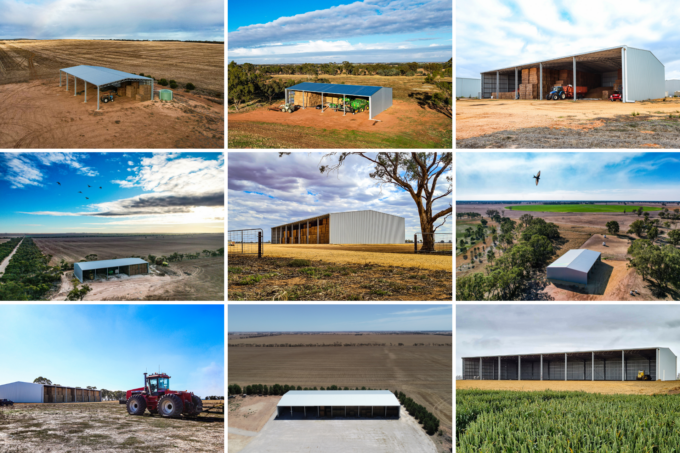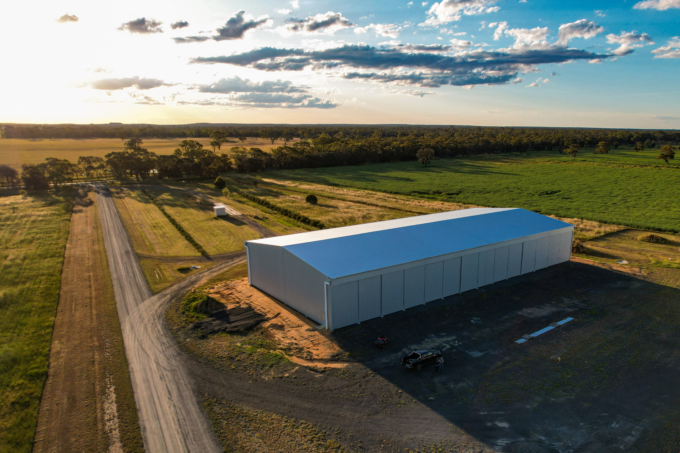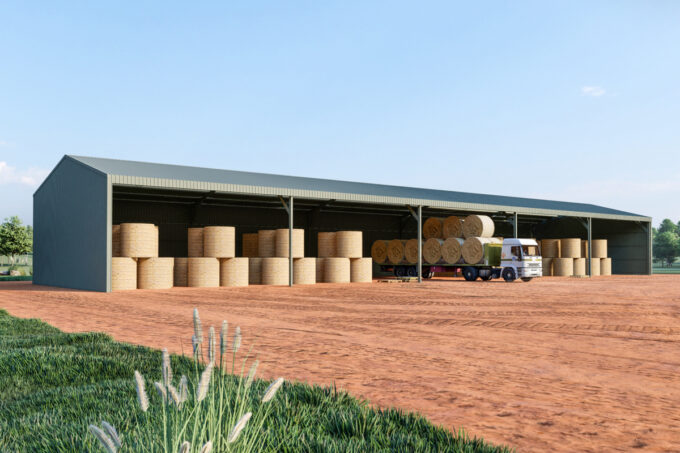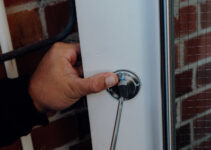Are you planning to build a new hay shed for your agricultural activities? Whether you’re doing a DIY project or hiring the services of a professional shed manufacturer, you need to understand a few things before starting the process, in order to ensure success.
Straw or hay sheds are excellent storage solutions if you’ve taken certain considerations into account. Keep reading as we share a useful checklist to ensure you build the right hay shed for your Australian farm needs!
Checklist: What to Consider Before Building a Hay Shed

Source: actionsteel.com.au
Location: Improve Productivity and Efficiency
Building your hay shed in the right location improves productivity and efficiency on your farm. If you’re harvesting and baling your hay, the shed should be located close to where this activity takes place. The proximity of your hay shed alows your workers to work smarter while saving on time and transport costs if you had to move the straw far distances.
The location of your hay sheds can also help minimise pest infestation especially if you have silos on your farm. Hay bales can attract rodents and other pests and keeping the sheds some distance from stored grain helps to mitigate this risk.
Privacy: Avoid Building Hay Sheds Close to Your Home
If you have transporters coming to your farm to collect hay bales, you don’t want heavy traffic moving too close to your home! Building the hay shed away from your residence gives you and your family the privacy you want, without curious onlookers peering over your wall when loading bales.
Hay harvesting and processing can be noisy business and keeping the hay sheds at a distance from your private home minimises this disturbance.
Access: Safe and Easy Accessibility

Source: actionsteel.com.au
Whether you’re using your hay shed to store your bales for use on the farm or to sell to other farmers, access is key for safety and convenience. Make sure your hay shed is easily accessible for small and larger vehicles as well as for heavy machinery used during the processing stages.
The hay sheds should be located in such a way that it’s easy to lay a solid road leading up to it. If drivers are accessing your farm from the main road, make sure that the drive to your hay sheds is safe enough for trucks or other heavy vehicles. Hiring experts that offer site-specific engineering services ensures your hay shed is suitably accessible with sufficient clearance space.
Space: Ample Clearance Around the Hay Shed
One of the first things shed manufacturers look at when inspecting the location of your hay shed is how much clearance space there is around the structure. This is essential for the safe and proper loading of hay bales from or onto heavy vehicles. There should be ample space in front of your hay shed to allow for this activity to take place efficiently.
Considering future operations is equally important, especially if you intend to expand your agricultural activities and need to build more hay sheds in the same location. Ensuring you have adequate clearance around your hay shed allows you to increase your business without moving structures to another location.
When clearing space for your new hay shed, factor in drainage and ensure that your structure’s foundation is kept dry whenever it rains.
Protection: Ensure Your Hay Shed Can Withstand the Elements

Source: ruralshedbuilders.com.au
Farming in Australia comes with its fair share of challenges including dealing with a harsh climate in some regions. Tropical cyclones hit Australia frequently and your hay sheds should be built solidly to handle these conditions. When picking a shed manufacturer to design your outbuilding, ensure that their materials and engineering include a category 2 wind rating for cyclone protection.
Many Australian farmers have to deal with runaway bushfires and your hay sheds should be strong, durable and structurally solid to protect them against wildfires. If you’re farming in high rainfall or snowfall regions, consider installing a skillion shed that has a variable pitch. This unique design allows for better drainage when the snow melts.
Size: Go Big From the Start
While your current operations may be small, if you intend to grow your agricultural business, building a bigger hay shed from the start makes good investment sense! Accommodating potential growth from the beginning ensures you maximise storage space for future needs. This can be done by:
- Adjusting the roof pitch to increase vertical storage capacity.
- Altering the span of the shed.
Maximising the size of your hay shed allows you to use if for other purposes as well, such as storing heavy machinery and farming tools. If you’re using shed manufacturers to build your hay shed, ask them if they provide custom designs. This gives you more flexibility when looking for maximum storage space.
Final Thoughts
Hay sheds are useful in more ways than one and working with a company that understands local farming conditions ensures you get a solid structure that lasts.
A final tip! Look out for features such as Australian-made steel, different flooring options and optional extras such as roller doors to improve your hay shed’s durability and functionality.
In conclusion, building the right hay shed for your Australian farm involves careful consideration of various factors. Location plays a crucial role in enhancing productivity and minimizing pest infestation, while ensuring privacy and accessibility is essential for a smooth operation. Adequate space and protection against the elements, such as cyclones and wildfires, are imperative for the longevity of your hay shed. Additionally, opting for a larger size from the start allows for future expansion and maximizes storage capacity. By collaborating with knowledgeable professionals and paying attention to key features, you can construct a durable and functional hay shed tailored to your specific needs and local farming conditions.







